Mitigating sewer flooding in the Misbourne Valley

We're working hard to reduce the impact of flooding across the Misbourne valley. In particular, in areas such as Amersham, Chalfont St Giles, and Chalfont St Peter.
Since September 2023, we’ve seen some of the wettest months on record. This has overwhelmed the foul sewer at times.
The flooding comes from many sources, not just sewers. Resolving these issues will need a continuous response from multiple agencies. So, we're working closely with local councils and responsible flood authorities.
Why flooding occurs in the area
The River Misbourne is a chalk stream which rises near Great Missenden. It flows for 27km then joins the River Colne at Denham. It's fed by groundwater. Our sewer network also starts in Great Missenden. It follows the river through Amersham, the Chalfonts then reaches Maple Lodge STW in West Hyde.
Groundwater and river levels vary between the summer and winter months. During wet weather, there's more rising groundwater, surface runoff and flooded watercourses. If this water flows over manholes, water can spill into the sewers, causing ‘inundation’.
When groundwater levels rise above our sewers, the pressure of the water can force its way into pipes. This is called ‘infiltration’ and affects pipes we own, or those owned by customers. It can occur on brand new pipes as well as older ones.
If large volumes of river, surface and groundwater enter the system, it can overload. When this happens, it will spill at the lowest points on the network. The winter from October 2023 to March 2024 was the wettest on record, which is why the sewers were unable to cope.
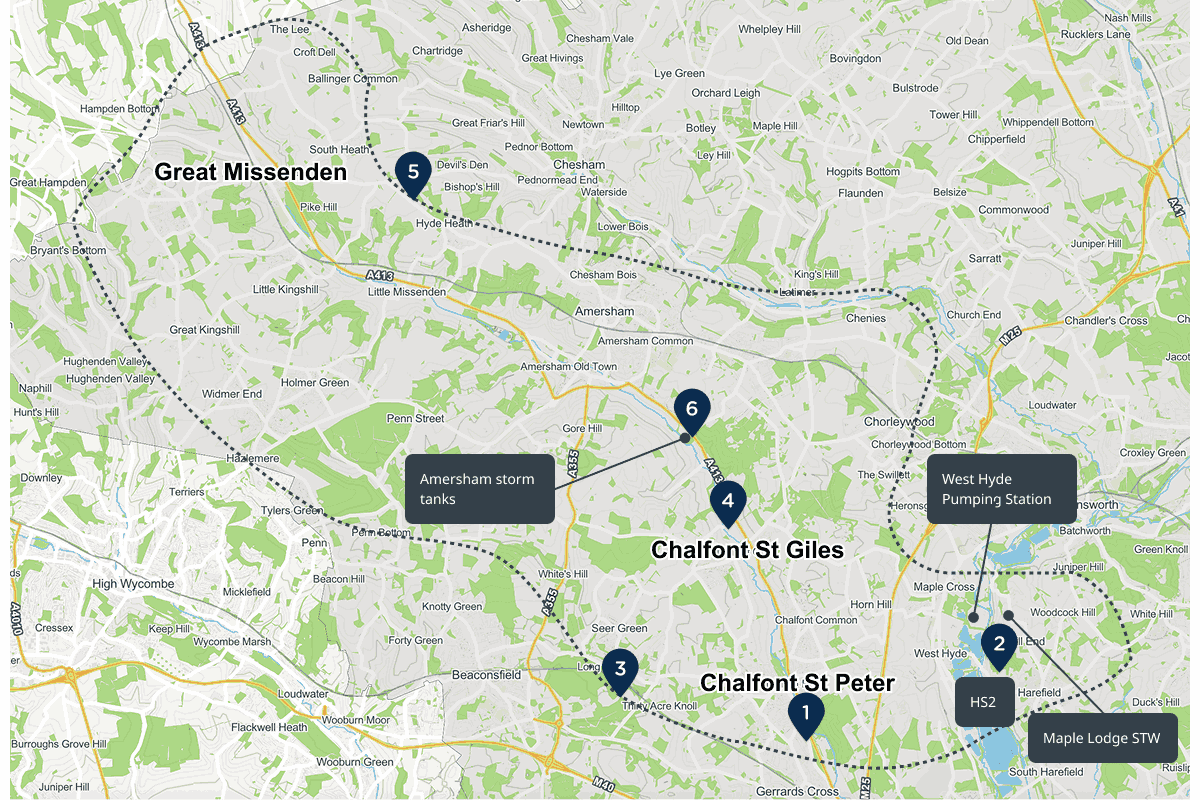
The map shows where we've completed work to mitigate sewer flooding in the catchment
Completed work
We've taken action to prevent flooding to help residents, businesses, and the environment. Over the last year, we've invested £12.5 million to mitigate the risk of sewer flooding. Due to the nature of the catchment, sewer flooding can never be totally eliminated. However, we aim to reduce the severity and frequency.
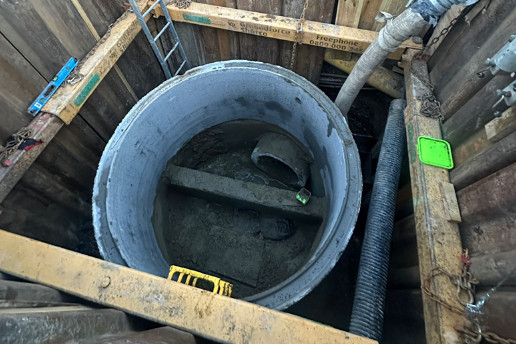
1. New tankering point
In December 2024, our teams installed new manholes in Chalfont St Peter. This allows for tankering to take place away from the High Street and keep traffic moving. Disruption to residents and businesses is reduced as no roads have to close.
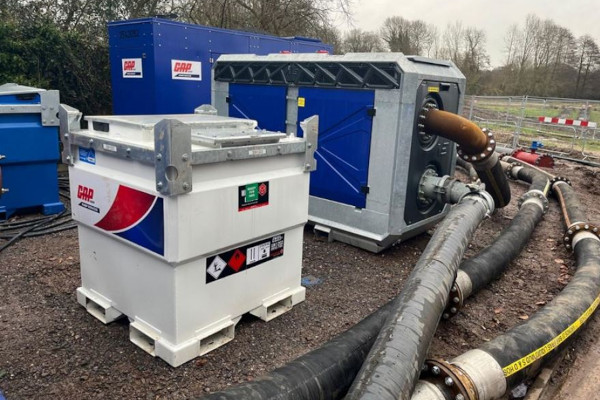
2. Emergency pumps
We've installed emergency pumps on the A412 and at our West Hyde sewage pumping station. These will pass forward more water when dealing with abnormal flows.

3. Survey work
We’ve completed 7.8km of CCTV surveys to identify which sections are suffering most from infiltration. We have also been surveying manhole shafts, including ones that are 40m (130 feet) deep.
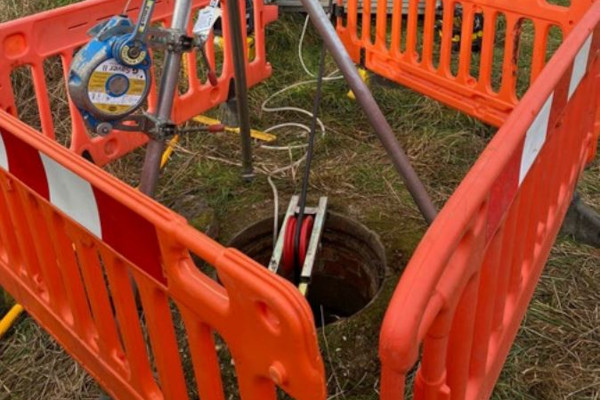
4. Sealing and re-lining
In 2024, we started sealing 30 manholes and re-lining around 1.7km of sewers. This reduces surface water and groundwater infiltration into sewers. As survey work continues, our team will identify more manholes and pipes to seal and re-line.

5. Flow monitors
Results so far show the catchment is more storm responsive than we thought. This means lots of surface water from roofs, driveways and roads is being directed into the foul sewer.

6. Advanced filtration
The Amersham storm tanks were designed to store wastewater during heavy rainfall. They release it gradually to the downstream network when the storm has passed. This reduces the risk of flooding in Chalfont St Peter. However, when the tanks are full and the downstream network is overloaded, the tanks discharge to the river. We have now installed micro-filtration screens. These will remove particles to 5 microns (0.005mm) to reduce the impact on the river. Normal design standards for storm overflows is 6mm.
How you can help
Our sewer network in the Misbourne Valley is foul. This means it's designed to take only wastewater from your toilets, sinks and showers. It's not designed to take large volumes of surface water, from roof or driveway runoff.
There are no surface water sewers in the area. Surface water would originally have been directed to gardens, ditches, watercourses or soakaways.
Over time, more properties have connected rainwater drainage to the foul system. This is why the network is now very responsive and exposed to rainfall.
View advice on preventing sewer overload.
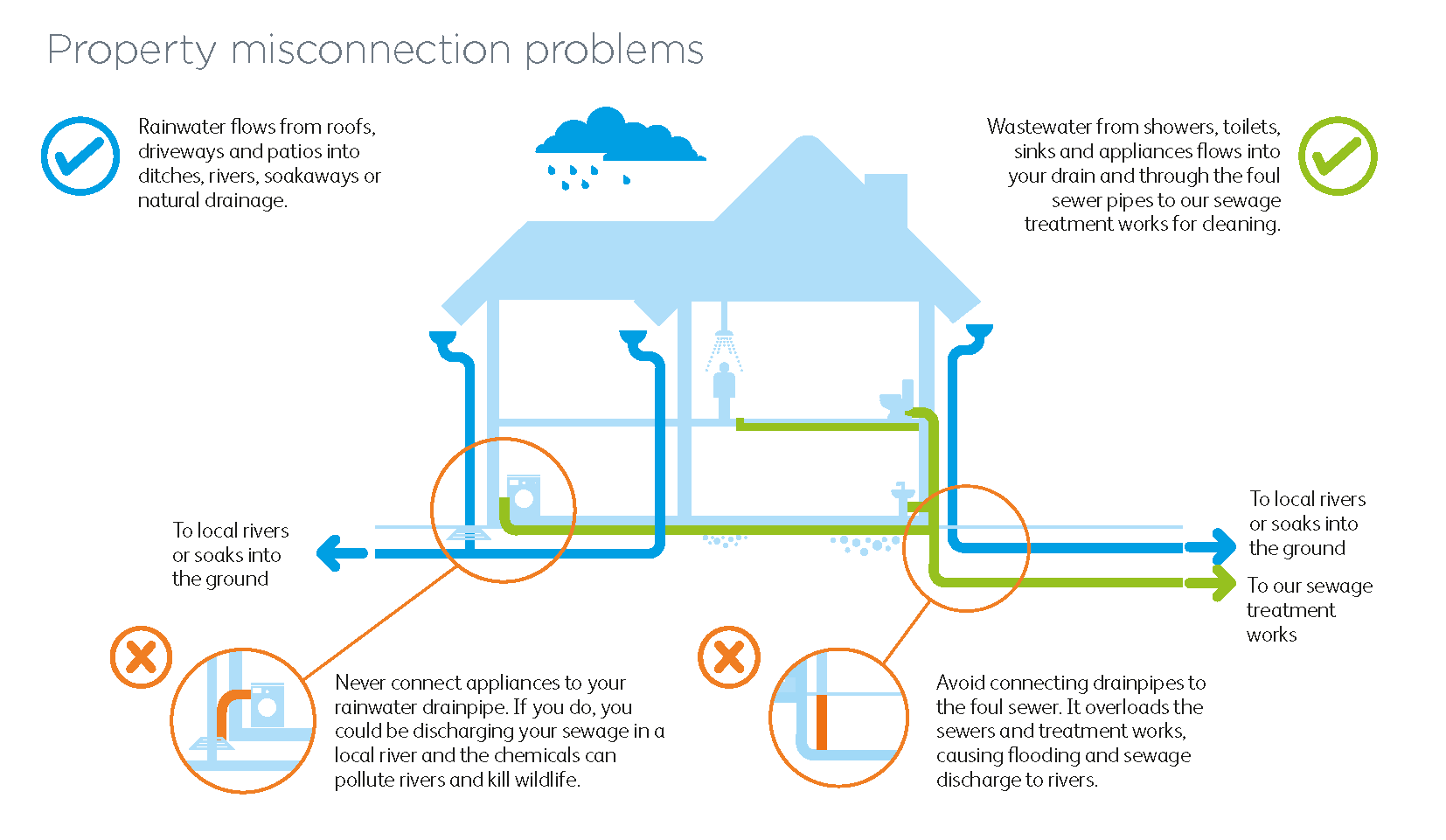
Get in touch
If you have any questions, contact us on 0800 316 9800. Please quote BB00807502.